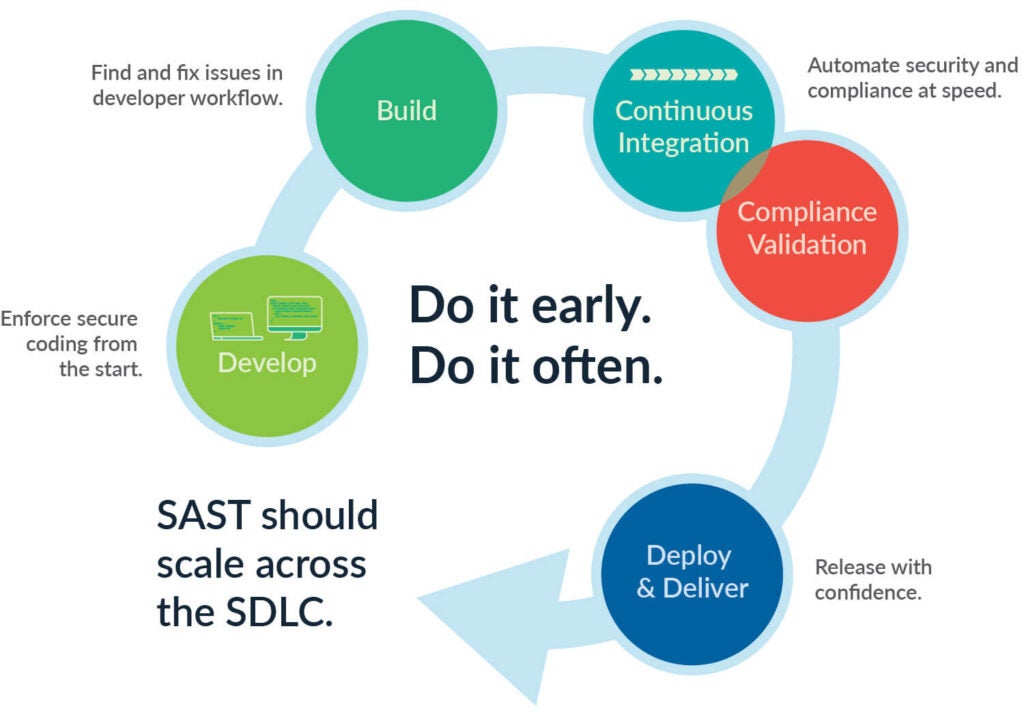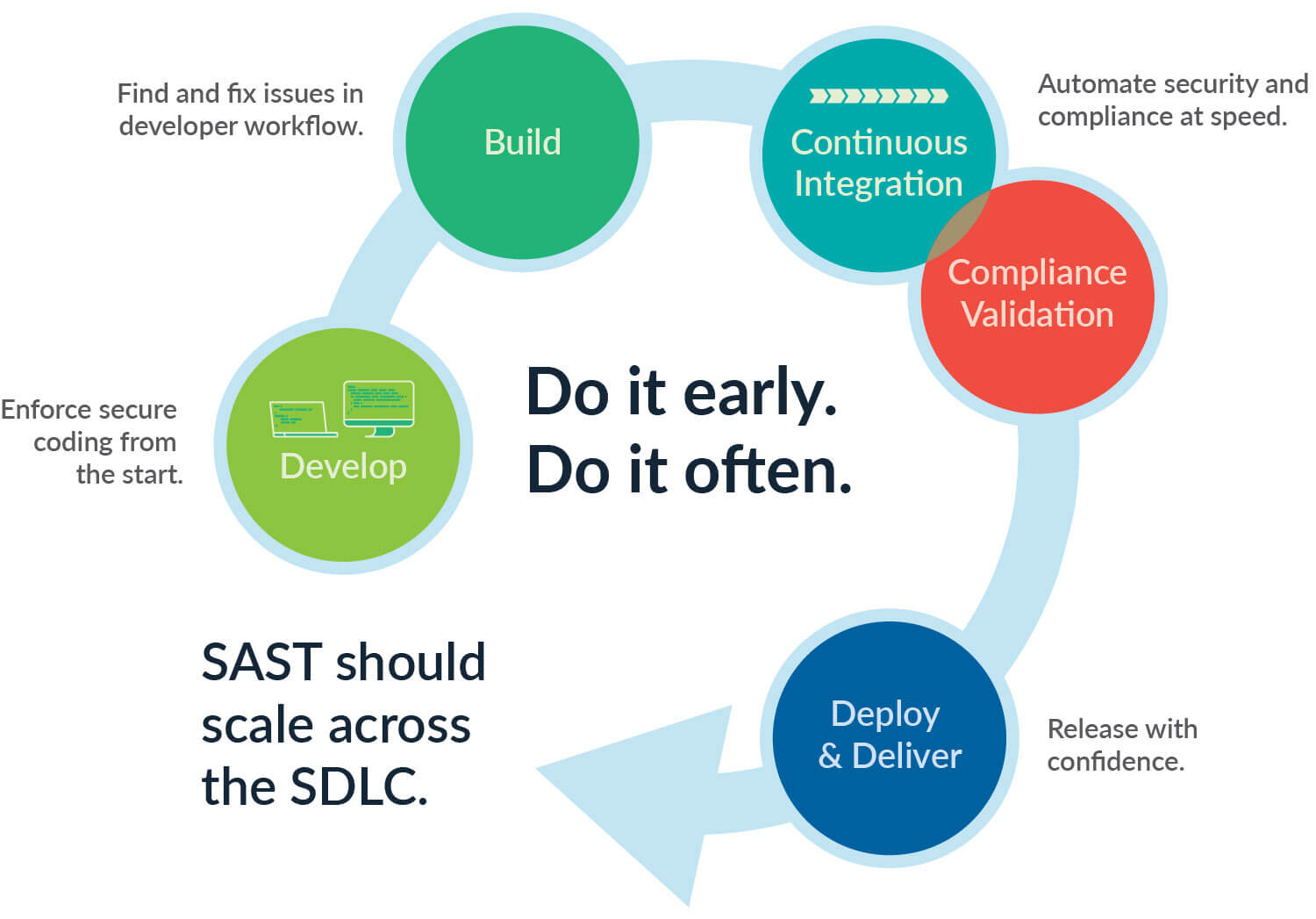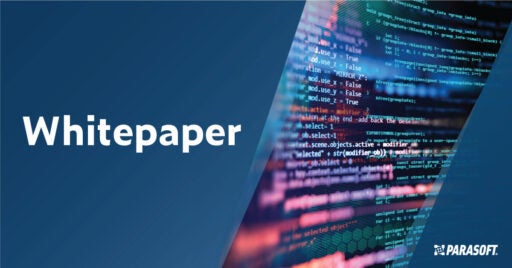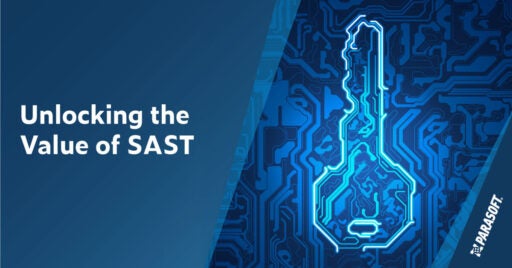Join Us on Apr 30: Unveiling Parasoft C/C++test CT for Continuous Testing & Compliance Excellence | Register Now

SAST: Software Security Testing Made Simple From the Start
Static application security testing (SAST) analyzes application source code to find software weaknesses that expose vulnerabilities and threats like SQL injection that lead to cyberattacks. Shift left security testing into development workflows for fast, accurate, reliable, and automated security and compliance.
Static Application Security Testing
What Is Static Application Security Testing (SAST)
Software security testing can be made simple from the start. Static application security testing, also known as SAST, performs software security testing that analyzes application source code to find software weaknesses that expose vulnerabilities and threats like SQL injection that lead to cyberattacks.
SAST is considered white box testing, which examines the functionality of an application from the “inside out” with access to its internal structure and design before code is compiled or running on a system.
SAST enforces secure coding practices in developers’ workflows to ensure development teams avoid known threats that could expose vulnerabilities when developing software, including web applications, APIs, and mobile applications. This guides developers to an understanding of what could go wrong as they are coding in their development workflows.
The immediate feedback helps developers fix issues before they integrate software into their continuous integration (CI) environments. Finding and fixing issues early helps organizations reduce the cost to maintain software, and accelerates software development activities.
SAST vs DAST
Both SAST and DAST (dynamic application security testing) are application security testing tools that detect various types of critical vulnerabilities. Each offers benefits but they’re different in their approaches.
SAST and DAST security tools are most effective in distinct phases of the SDLC (software development life cycle). As mentioned, SAST is a white box method. It tests code to find vulnerabilities and errors like SQL injection and others on the OWASP Top 10 list.
DAST is a black box, interactive application security testing (IAST) method that examines applications as they run (known as dynamic analysis) to detect vulnerabilities.
Both SAST and DAST are testing capabilities that can be used in the DevSecOps process to identify issues in applications that use open source software.
SAST identifies the “known unknowns,” which are risks in software (CWE) that could lead to compromise or expose vulnerabilities.
Software composition analysis (SCA) is a form of dynamic application security testing that uses binaries to identify the “known knowns” risks in software (CVE) that are known to lead to compromise.
Developers can run SAST and DAST to gain confidence in the overall code quality of their applications.
Read our whitepaper to unlock the value of SAST and learn how to implement it as a continuous, end-to-end solution.
Benefits of SAST
Static application security testing is an essential software and application security (AppSec) testing activity that spans across an SDLC to give organizations confidence that no known vulnerabilities exist in their software. To enable SAST across the SDLC, SAST must be automated to scale the demands of modern development and tightly integrate with CI/CD pipelines and toolchains to provide continuous assurance that produces secure software.
This allows organizations who have formalized DevSecOps to realize the value of SAST analysis and reap the benefits of doing it early and often to achieve security at speed. Parasoft SAST solutions offer the following benefits.
Seamless Integration
Integrating SAST into developers’ workflows is essential for modern software development processes. Testing early requires seamlessly integrating into developer tools and workflows to prevent security issues from the onset.
Simplified Remediation and Triage
Navigating through SAST results and understanding what to fix and suppress can often be time-consuming and discouraging for developers. Simplifying remediation requires an understanding of what matters the most to the developer for a given project, and what type of attacks pose the most risk to the organization.
Automated Security and Compliance
Automating security and compliance (OWASP, CERT, CWE, MISRA) with SAST helps integrate SAST security and validate compliance in developers’ workflows. This removes the need for manual checks and enables development organizations to scale security testing with SAST across the enterprise to better understand application security risk in software.
Speed and Accuracy
Codifying secure coding and design practices in developer workflows helps eliminate common mistakes like poor use of language constructs, use of insecure functions, poor coding practices, and use of vulnerable third-party components. This in turn reduces remediation efforts and enables developers to work on features rather than spending their time fixing bugs. The use of AI/ML and automating these practices speeds up source code analysis and makes SAST tools perform better. Employing techniques like code coverage and differential scanning is ideal for automating SAST in CI/CD workflows.
Types of Support & Capabilities
Making software security testing simple from the start with SAST is the key to unlocking the value. Here’s how Parasoft helps.
- Extensive support for popular integrated development environments (IDE) and tools for build environments.
- Developer-friendly remediation guidance and examples.
- Developer-friendly workflow to pinpoint issues that can lead to a data breach in real time.
- Advanced AI capabilities to prioritize and make sense of alerts.
- Developer-driven context to enhance AI models to reduce noise associated with false positives.
- Contextual analysis to reduce false positives and eliminate misleading bugs.
- Advance analysis capabilities to increase detection of real issues.
- Code coverage and impact analysis to optimize scanning.
- Automation and support for OWASP, CERT, CWE security standards.
- AI-guided differential scanning.
SAST Best Practices
Shifting security testing left with SAST into developers’ workflow is not only a best practice but essential to find and fix vulnerabilities early to accelerate software development.
Unlocking the value of SAST with developer-centric capabilities is the key to building security-in from the onset. Making security testing with SAST simple from the start encourages developers to adopt and use tools as they build and develop secure software.
How to Get Started With SAST
One of the important decision points in getting started with SAST is understanding what compliance standards need to be adhered to. Parasoft supports a broad range of security, quality, and safety standards that span various industries.
Automating software security testing with SAST is essential to achieve security at speed in DevSecOps.
Increasing the fidelity in SAST results is important to help developers focus on what matters the most. SAST tools must reduce the noise that’s often associated with false-positives. Soundproofing your SAST with fast, accurate, and reliable results helps scale software testing in development workflows.
Shift Testing Left
SAST plays an important role in shift-left testing for security risks. To find the true value of SAST, development teams must do it early by pushing security left into the developer workflow and do it often across the SDLC.

Parasoft SAST is well-positioned to extend across your entire SDLC.

Why Parasoft?
Parasoft’s SAST solution integrates with popular development technology stacks and leverages AI/ML capabilities to streamline and automate security testing at speed. That allows security teams and organizations to scale the challenges around security and compliance validation.
Parasoft unlocks the value of SAST to simplify software security testing from the start by focusing on improving the developer experience.
Developer-centric SAST gives developers confidence in using SAST as they code and develop software, reducing security risks and the costs to maintain software.
Only Parasoft offers:
- Security and compliance at speed.
- Real-time awareness of risk in software.
- Immediate feedback, and analytics to streamline remediation workflows.
- Help in eliminating the bottleneck of manual testing tasks.
- Deep insights and analytics to pinpoint what matters the most.
Frequently Asked Questions
Related Resources

Elevate your software testing with Parasoft solutions.


